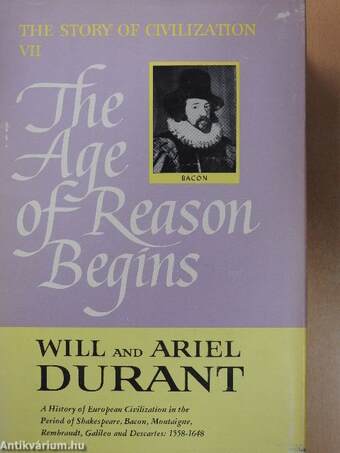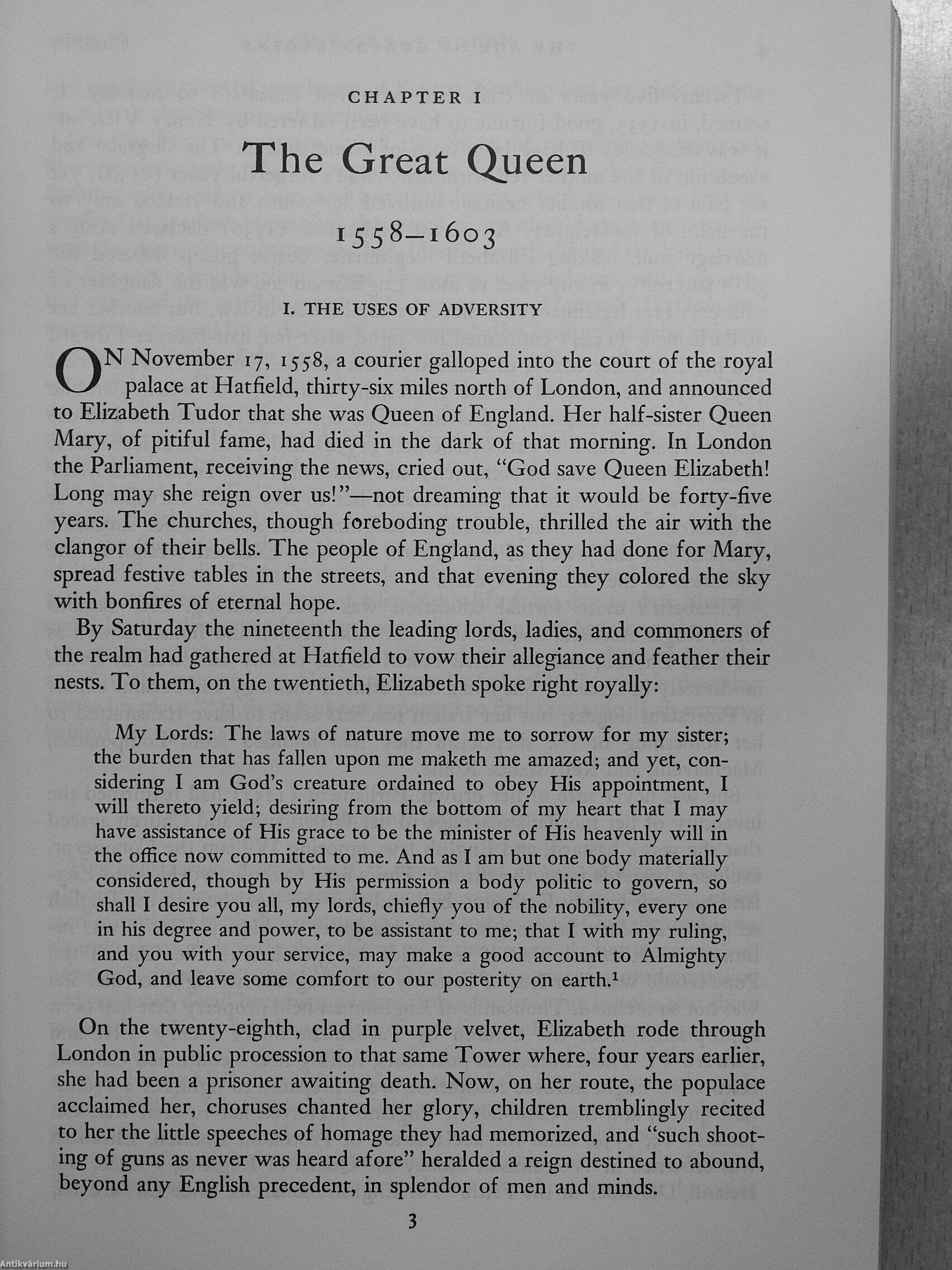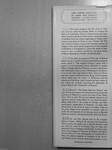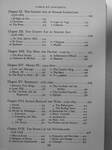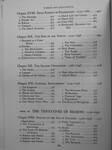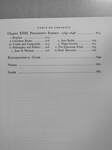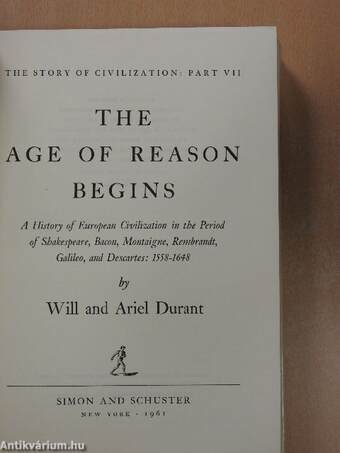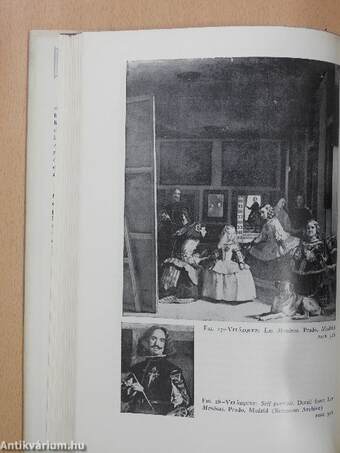1.076.523
kiadvánnyal nyújtjuk Magyarország legnagyobb antikvár könyv-kínálatát

VISSZA
A TETEJÉRE
JAVASLATOKÉszre-
vételek
The Age of Reason Begins
A History of European Civilization in the Period of Shakespeare, Bacon, Montaigne, Rembrandt, Galileo, and Descartes: 1558-1648
| Kiadó: | Simon and Schuster, Inc. |
|---|---|
| Kiadás helye: | New York |
| Kiadás éve: | |
| Kötés típusa: | Vászon |
| Oldalszám: | 729 oldal |
| Sorozatcím: | The Story of Civilization |
| Kötetszám: | 7 |
| Nyelv: | Angol |
| Méret: | 25 cm x 17 cm |
| ISBN: | |
| Megjegyzés: | További kapcsolódó személy a könyvben. Fekete-fehér reprodukciókkal. |
naponta értesítjük a beérkező friss
kiadványokról
naponta értesítjük a beérkező friss
kiadványokról
Előszó
TovábbFülszöveg
This book continues the life work of what may now be called the Durant family in writing the history of civilization. The six volumes previously published (listed on the back of this jacket) carried the story of mankind from the earliest beginnings of Asiatic civilization to the death of Calvin in 1564. Volume VII, The Age of Reason Begins, surveys the turbulent century of religious strife and scientific progress from the accession of Elizabeth I of England in 1558 to the death of Descartes in 1650 — a centurv marked by such great names as Bacon, Shakespeare, Galileo, and Rembrandt.
f^w^^iThe table of contents of The Age of Reason Begins reveals a wealth of famous personalities and great events. Book I, "The English Ecstasy," opens with a portrait of the fascinating Queen Elizabeth. It studies Sidney, Raleigh, Spenser, Marlowe, Jonson, and Donne, and undertakes a fresh review of Shakespeare. In history, it covers the loves and death of Mary Queen of Scots, and that creative... Tovább
Fülszöveg
This book continues the life work of what may now be called the Durant family in writing the history of civilization. The six volumes previously published (listed on the back of this jacket) carried the story of mankind from the earliest beginnings of Asiatic civilization to the death of Calvin in 1564. Volume VII, The Age of Reason Begins, surveys the turbulent century of religious strife and scientific progress from the accession of Elizabeth I of England in 1558 to the death of Descartes in 1650 — a centurv marked by such great names as Bacon, Shakespeare, Galileo, and Rembrandt.
f^w^^iThe table of contents of The Age of Reason Begins reveals a wealth of famous personalities and great events. Book I, "The English Ecstasy," opens with a portrait of the fascinating Queen Elizabeth. It studies Sidney, Raleigh, Spenser, Marlowe, Jonson, and Donne, and undertakes a fresh review of Shakespeare. In history, it covers the loves and death of Mary Queen of Scots, and that creative conflict between King and Parliament which ended with the victory of Parliament and the execution of the King. And it sounds the basic theme of the volume by carefully analyzing the philosophy of Francis Bacon, the "Chanticleer of Reason."
II, "The Faiths Fight for Power," surveys the life and culture of Continental Europe from the accession of Philip II in 1556 to the close of the Thirty Years' War in 1648. We see the Catholic Church in its vigorous recovery under Sixtus V; we watch the astonishing infiltration of the Jesuits in Europe, and their communistic organization of Paraguay; we assist with Monteverdi at the birth of opera; we follow Tasso in his poetic flights from Jerusalem to insanity; and we study the development of the baroque style, as Bernini plants his majestic colonnade before St. Peter's in Rome.
Dr. and Mrs. Durant turn to the complex history of Spain - Philip II, the Armada, the Inquisition. They examine the golden age of Spanish literature and art, with the works of Cervantes, Lope de Vega, Calderón, El Greco, Velázquez and Murillo. In France they survey the intrigues of Catherine de Médicis, the adventures of Henry IV, the statesmanship of Cardinal Richelieu, the artistic creations of Corneille in the theate-and Poussin in art. Twenty lively and scandalous pages
(Continued on back flap) Vissza
Témakörök
- Idegennyelv > Idegennyelvű könyvek > Angol > Művelődéstörténet
- Idegennyelv > Idegennyelvű könyvek > Angol > Történelem > Európa története > Egyéb
- Művelődéstörténet > Kultúra > Története
- Művelődéstörténet > Eszmetörténet > Egyéb
- Művelődéstörténet > Átfogó művek, tanulmányok
- Történelem > Idegennyelvű > Angol
- Történelem > Kontinensek szerint > Európa, európai országok története > Egyéb
- Történelem > Újkor > Egyéb
Megvásárolható példányok
Nincs megvásárolható példány
A könyv összes megrendelhető példánya elfogyott. Ha kívánja, előjegyezheti a könyvet, és amint a könyv egy újabb példánya elérhető lesz, értesítjük.



